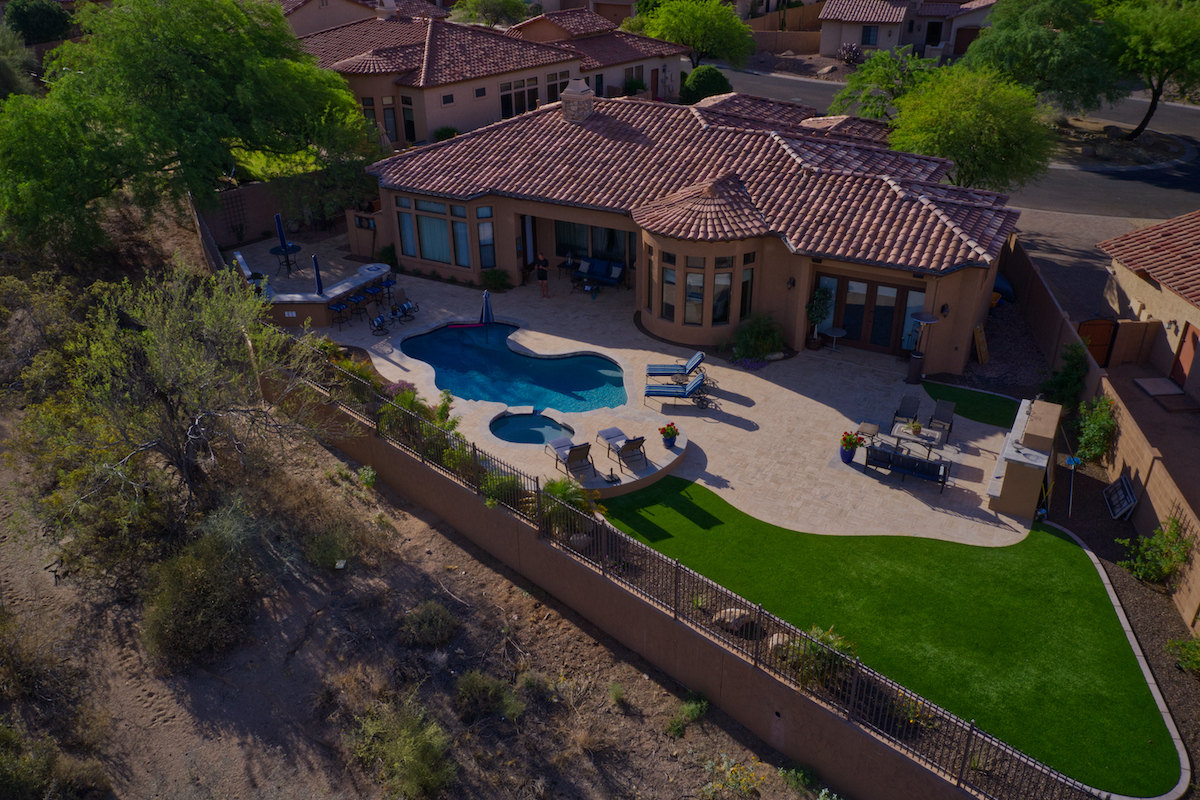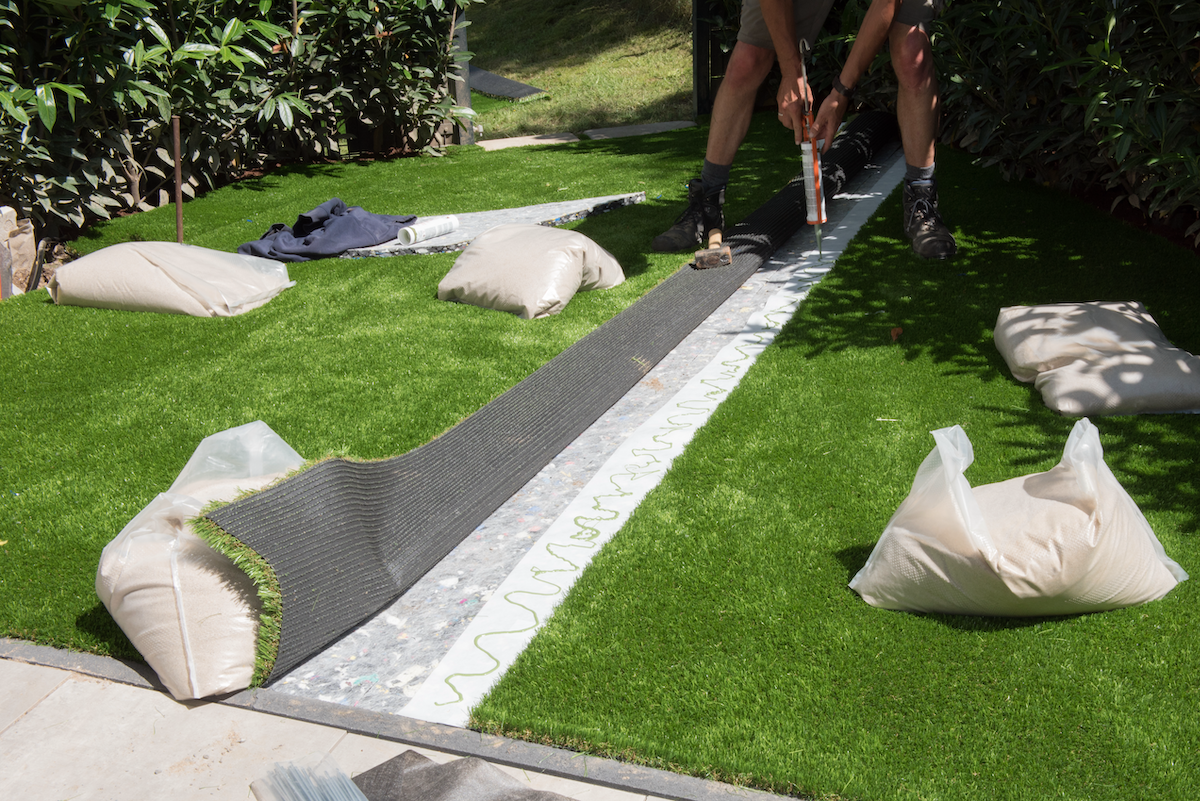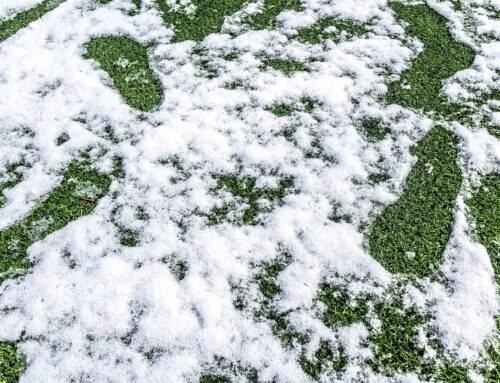Last Updated on June 23, 2023 by ReTurf
So, you’ve finally got lush, green artificial grass in your backyard oasis. And now that your party guests have left behind a flurry of debris on your pristine synthetic turf—confetti, food crumbs, you name it—you’re probably wondering, “Should I get the old vacuum cleaner out and give it a whirl?”
This is a common question for folks who’ve swapped their traditional grass lawn for the synthetic variety.
The good news is, you can indeed vacuum your artificial grass—but there’s a bit of an art to it.
Introduction
Before we dive headfirst into whether or not you can vacuum it, it’s helpful to understand what artificial grass is made of.
Synthetic grass is designed to emulate the look and feel of the real thing. Crafted from strong synthetic materials such as polyethylene, polypropylene, or nylon, it’s a resilient and attractive landscaping option that retains a natural, green look throughout the year:

But despite its durability, it’s important to remember that “fake grass,” like most things, isn’t invincible.
Even high-grade artificial turf has its limitations. While these materials are engineered for endurance, they aren’t entirely indestructible. This understanding is important when it comes to maintaining artificial grass.
Vacuuming Artificial Grass: Important Considerations
So, we’ve established that vacuuming artificial grass is possible—however, it’s important to proceed with caution.
Vacuuming can be a practical solution to eliminate light debris, such as leaves or minor litter, but it shouldn’t be the go-to solution for cleaning up messes.
This is the case for a couple important reasons, not the least of which is infill.
Infill plays a crucial role in artificial turf installation, and it’s typically comprised of sand, crumb rubber, or a mix of both, and it’s spread across the artificial turf and raked into the fibers.

When you use vacuum artificial grass, the suction can potentially remove or displace the infill. Loss or uneven distribution of infill could lead to the grass blades not standing as upright or the turf not being as stable or cushioned as it should be. If the infill is dislodged or vacuumed up, it may require replacement. It’s the same reason you don’t want to use a power washer or pressure washer on artificial grass with infill.
So if you’re planning to use a vacuum on artificial turf with infill, you should consider only using a light hand vacuum and holding it a safe distance from the surface.
The fact is, even though artificial grass is robust, it’s not impervious to damage. The bristles and strong sustained suction power from a vacuum cleaner can potentially harm the synthetic fibers if cleaning is not done properly.
Artificial grass blades are designed to bounce back after being stepped on, not necessarily to withstand the constant pull of a strong vacuum. Therefore, you probably don’t want to use a vacuum cleaner/setting that’s very strong. A vacuum with overly powerful suction might yank at the artificial grass fibers too harshly, causing them to loosen or get uprooted from the backing material. It could also lead to an uneven appearance as the vacuum might not pull at all the grass blades evenly.
Over time, consistent use of a high-power vacuum could cause your artificial turf to thin out or appear patchy.
It’s also worth noting that vacuum cleaners with rotating brushes should be avoided, too. These types of vacuums are designed to penetrate deep into the pile of carpets and rugs to remove embedded dirt and dust. This vigorous action is unnecessary for artificial grass and could cause damage.
So in short, while vacuuming is a possible method for maintaining artificial grass, it requires a very light touch and the right equipment. Consider using a hose, broom, and/or turf-safe brush to clean up messes instead.

What About the Turf Vacuums Used in Sports Stadiums?
Some stadiums that use artificial turf do use specialized turf vacuums for maintenance. These turf vacuums (A.K.A. turf sweepers) are designed to effectively remove debris, including leaves, trash, and even rubber infill, from the artificial grass. They are often larger and more heavy-duty compared to household vacuums.
It’s also worth noting that these turf vacuums are operated by trained professionals who understand the specifics of maintaining artificial turf in a stadium setting. They know how to operate these machines in a way that cleans the turf without causing unnecessary damage.
If you do decide to use a vacuum cleaner on turf at home, proceed at your own risk, and preferably use a lightweight/handheld vacuum with adjustable suction power, allowing you to control how much force is applied.
Remember, vacuuming is ideal for lighter debris. For heavier items or ingrained dirt, other methods of cleaning and maintenance may be more effective.
When to Vacuum Artificial Grass
Vacuuming artificial grass is most suitable under the following conditions:
- Light Debris: Ideal for leaves, paper, or other lightweight trash.
When Not to Vacuum Artificial Grass
Vacuuming is not recommended under these circumstances:
- Wet Surface: Do not vacuum when turf is wet.
- Heavy Debris: Rocks, broken glass, or other heavy debris should be picked up manually to prevent damage to the vacuum cleaner.
- Deep Dirt: If the dirt is deeply embedded in the fibers of the grass, it’s best to use a specialized artificial grass cleaner instead. Don’t attempt to “deep vacuum” artificial turf unless you are prepared to replace any sand/infill that is removed.
How to Vacuum Artificial Grass
Here are step-by-step instructions for vacuuming your artificial grass effectively:
- Inspect the Area: Before starting, scan the grass area for any large or sharp debris and remove these by hand.
- Choose the Right Vacuum: Use a lightweight, handheld vacuum with a high suction power and without a rotating brush.
- Gently Vacuum: Holding the vacuum a safe distance from the ground, vacuum lightweight debris off the artificial grass gently, moving in straight lines to ensure all areas are covered.
- Re-brush the Grass: After vacuuming, use a soft-bristled brush to help the grass blades stand back upright.
Preferred Alternative Methods for Cleaning Artificial Grass

Apart from vacuuming, there are other effective methods to clean and maintain artificial grass:
- Brushing/Brooming: Regular brushing helps keep the grass blades upright and removes surface debris.
- Rinsing: A quick rinse with the garden hose can help wash away dust, dirt, and minor debris.
- Spot Cleaning: For stains, try a mild detergent mixed with warm water and a soft, turf-safe brush.
- Artificial Grass Cleaners: For a more thorough cleaning, specially designed cleaners for artificial grass are available.
- Handheld leaf blower and/or lawn vacuums: If used correctly, these can be helpful for blowing away/picking up leaves and other small, lightweight debris.
The Bottom Line
So, can you vacuum your artificial grass lawn? Yes, technically you can if you follow the instructions above. But given the risks, it’s not necessarily the best or most convenient method for maintaining your artificial turf at home.
Instead, consider gentler turf cleaning methods like brushing, soft scrubbing, and rinsing. If you do decide to vacuum artificial grass, only use a small, lightweight/handheld vacuum and keep it a reasonable distance away from the blades so it can suction up debris and messes without affecting the turf itself.
Remember: maintaining the look and longevity of your artificial grass isn’t about employing the most powerful cleaning methods. It’s about choosing the right methods.
With gentle, turf-safe cleaning techniques, you’ll ensure that your artificial lawn stays lush, green, and inviting for years to come.



